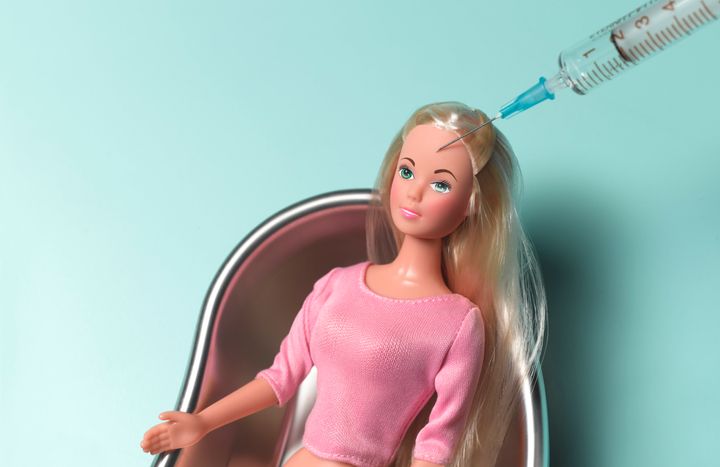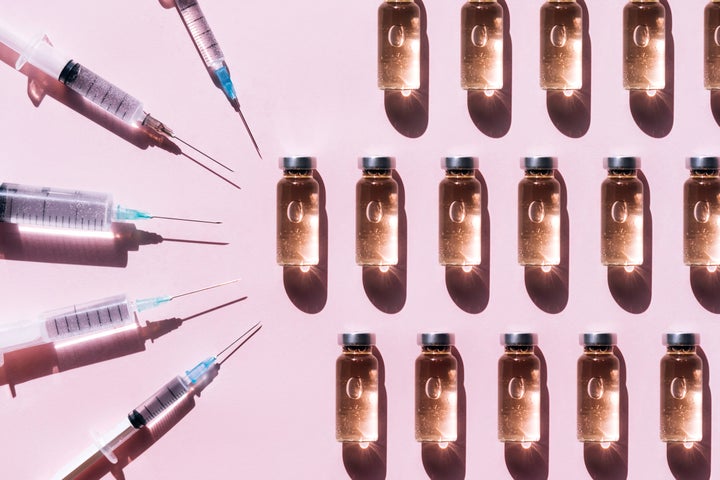
To many, Botox is a controversial topic. Plenty of questions surround the potential use of the injections: How much Botox is too much Botox? Who are the best doctors? Should a physician’s assistant be allowed to administer the injections? Are other products preferable?
Perhaps most common, though, are queries about the best age to start the injections, if you’re interested. Some believe that, once one’s skin starts sagging, it’s already too late for Botox to properly work. Others assume that “preventative Botox” is a myth.
To get the facts, we reached out to board-certified dermatologists and plastic surgeons, asking when is the ideal age to start getting Botox, especially when trying to maximise results.
What is Botox?
Short for botulinum neurotoxin, Botox injections use a toxin to limit muscle movement for a limited time. By preventing targeted muscles from moving and completely relaxing them, the substance basically smooths out wrinkles when applied to the face.
Interestingly enough, the first use of Botox was unrelated to cosmetic matters.
“Botox was actually isolated almost 100 years ago and it was originally used to treat spasms around the eyes,” explained Beverly Hills plastic surgeon Dr. Gary Motykie. “Doctors were using it to treat people medically and they started noticing that the patients were looking younger, so at one point companies started looking into other benefits of the injections. Nowadays, people don’t realise that Botox is used for many disorders like spasms, migraines, muscle disorders, vocal cord issues, bladder problems and more. It has a lot of medical uses other than cosmetic ones.”
It is cosmetic uses, though, that have propelled Botox into the popular cultural canon, making it “one of the most common nonsurgical cosmetic procedures” in the world, according to the University of California San Francisco, with an estimated 11 million people having used it at least once.
In the noninvasive surgical world, the most popular targeted area is, according to experts, the face.
“Between the eyes is the most common place to get Botox,” said New York dermatologist Dr. Leah Ansell. “It opens up your eyes. The second most common place is the forehead for wrinkles. Then there are other ‘special areas’ that people treat, like where your nose scrunches by the eyes above your lip and the angles of the jaw.”
No matter the target, the goal of the procedure is to smooth out skin creases, and not necessarily to prevent them from appearing in the first place.
When should someone start getting Botox?
“There is not one age to start Botox,” Ansell said. “It varies on the individual. Specifically, when you start to see lines that are etched at rest — meaning they are there even when you are not raising your forehead or smiling, but just staring right ahead — it means it’s time to consider starting light Botox.”
Motykie has a similar view. “The ideal age to start Botox is when you are starting to show signs of aging,” he said. “That is usually in your late 30s and early 40s.”
Genetics can also play a factor.

“I tell patients to look at their relatives,” Ansell said. “If those adults in their 50s, 60s and 70s have a lot of sun damage or a lot of wrinkles, that may happen to you as well. There are a lot of genetics at play here, so knowing what your skin type is can help.”
Speaking of sun damage, the doctors we contacted all were adamant about the importance of sun protection, both for health reasons and in order to stave off wrinkles — and therefore the use of Botox.
“The most important thing you could tell someone with respect to wrinkling and aging is to avoid the sun,” said Miami-based plastic surgeon Dr. Carlos Wolf. “Wear sunscreen, use antioxidants and hydraulic acid to moisturise the skin. You have to be careful as the sun is what makes you look older.”
How bad is it to get Botox injections before the suggested guidelines?
“We’re seeing a trend as potential Botox patients are becoming younger and younger, and I’m not a huge fan of that,” Motykie said. “Traditionally, the majority of those interested were in their 40s and 50s as they were starting to show signs of aging, but now it’s becoming more mainstream” at younger ages.
Plenty of factors contribute to the trend, especially our reliance on social media and all things visual. We place so much importance on pictures and the look of things that it’s only natural to turn the lens toward ourselves. We are the subjects of our own selfies, after all.
Also, given the popularity of the injections, folks seem to have become at ease with the idea of getting Botox. People think everyone is signing up for the procedure, so why shouldn’t they try it?
As medical professionals noted, though, getting Botox in your early 20s when it’s rare to have wrinkles might not be the wisest idea.
“If someone has no lines, no wrinkles, boasts a nice healthy skin, is in their mid 20s, I really don’t think it’s worth getting Botox,” Ansell said.
Although some dermatologists say that freezing muscles relatively early in life may prevent the formation of deeply etched lines, Wolf challenges that view.
“If a car salesman tells you that you should buy a new car in case your current one breaks down, would you do it?” he asked.
Also, it may not be a good idea to inject your face with too much toxin, which may happen if starting early.
“I don’t think there are negative effects to starting early, but if people’s faces are too frozen because of it over time, does that change the way people interact with them socially?” Ansell asked.
Clearly, Botox is about more than smoothing wrinkles, which makes the age when you start injections that much more important.
What can you do to avoid needing Botox?
According to experts, the best way to push off the appearance of wrinkles and the potential need for Botox is proper skin care. In addition to avoiding the sun and using sunscreen, Motykie sings the praises of microneedling.
Also referred to as collagen induction therapy, the procedure basically calls for the repeated puncturing of the skin with tiny needles. According to the Cleveland Clinic, this will “help reduce the appearance of skin concerns such as acne scars, stretch marks or wrinkles.”
“As we get older, the skin is thinning, so you’re not only getting wrinkles from muscle movements but from the skin thinning,” Motykie explained. “Microneedling alone can help thicken your skin and therefore prevent those wrinkles from forming, and I think that at a younger age that would be a preferable go-to than starting with the Botox right away.”